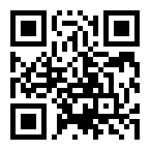- The end of an era —or not (6/6/25)
- A national crisis has found us (6/5/25)
- Born of defiance, sustained by tradition (6/3/25)
- Elections are not as far off as we think (5/30/25)
- Rubber stamps and executive orders (5/29/25)
- In a republic, oversight is the job (5/27/25)
- ‘Tutoring corps’: A lifeline for students (5/23/25)
Editorial
New technology offers instant electronic link
Tuesday, August 23, 2011
Someone from the production department asked the editor Monday if there was something wrong with the picture on page one.
We can't blame him.
The block appeared to be "pixilated," -- computer talk for a picture a computer was trying its best to create without the right information.

No, it was our first use of a QR -- Quick Response -- code. If you have a smart phone like an iPhone or Android, did you try it out, and did it work?
Here's one for the Gazette website:
A couple of tries in the office were less than successful, one camera didn't seem to be focusing correctly, and the other tried to go to the Internet site, a live webcam video feed of the construction of McCook Community College's new Events Center, but the video didn't immediately load.
We remember going to an Internet workshop for newspapers about 20 years ago, when the presenter told about a young reader who pointed at a photo on a primitive website and asked, "Why can't that be a video?"
Why, indeed, asked the presenter.
Now, newspapers have to think about video almost as much as they do about still pictures and the printed word.
The QR code traces its roots to the old barcode, which first appeared on a pack of Wrigley chewing gum in 1974. A subsidiary of Toyota created the QR code, which has two dimensions and can be scanned more quickly, in 1994 for use in manufacturing, and it has since spread to personal electronic devices.
It can be used to input a website URL, text or other information quickly into an iPhone, iPad or Android phone or tablet.
The system is intriguing for a newspaper, providing an instant electronic link for someone reading the print version without making them put down the paper to sit down at a computer.
As smart phones become more popular, it should open up more and more opportunities for readers to connect with stories, photos, videos and websites for news, advertising, coupons and special offers.
A hundred years after he founded the Gazette, we have a feeling Harry Strunk would have approved of the innovation. After all, he was the first known publisher to purchase an airplane for daily newspaper delivery, and was always ready to try something new, such as experimenting with early fax machines.
Today, descendents of Harry Strunk's first readers still enjoy holding the latest printing of his brainchild in their hands, as well as on the Internet and even on their smart phones.
Whatever the means of delivery, however, the Gazette's mission remains the same, providing the news, images and advertising readers want and need.

